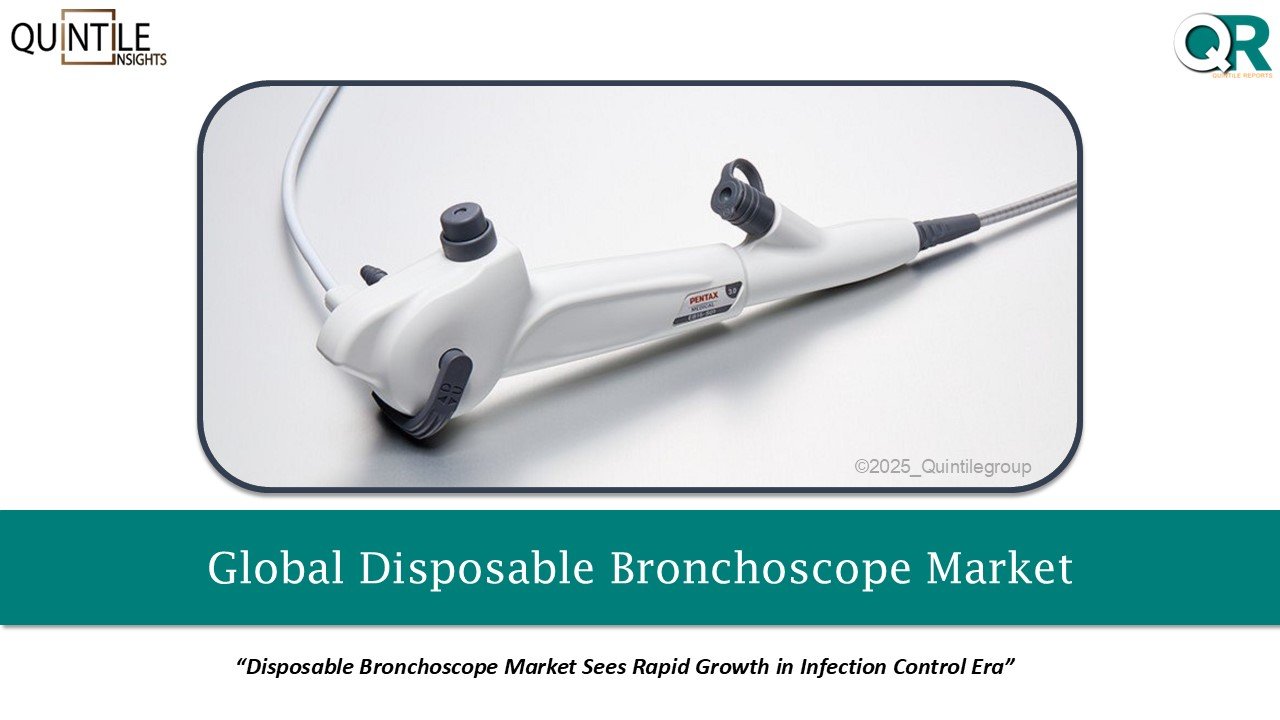Introduction
The healthcare industry is in the midst of a transformation, shaped by rising demand for safety, efficiency, and innovation. One of the most significant changes is the growing adoption of disposable medical devices, which are reshaping clinical practices worldwide. The Disposable Bronchoscope Market is growing rapidly due to rising respiratory diseases and infection control needs. Explore trends, growth, and future outlook.
Bronchoscopes are essential tools for diagnosing and treating conditions related to the lungs and respiratory system. Traditionally, these devices were reusable, requiring costly sterilization and maintenance. However, the growing awareness of hospital-acquired infections (HAIs) and the need for rapid turnaround times have fueled the demand for disposable alternatives.
Market Growth and Size
The global disposable bronchoscope market is expected to witness strong growth between 2025 and 2034, with forecasts suggesting a double-digit compound annual growth rate (CAGR 9.17% ). Rising prevalence of chronic respiratory diseases, combined with the impact of COVID-19, has accelerated the shift toward single-use bronchoscopes.
According to industry analysis, the market is projected to reach several billion USD in value by 2034, as healthcare providers recognize the advantages of disposables over traditional models.
For an in-depth breakdown of numbers and forecasts, you can explore the full report here: https://www.quintilereports.com/request-sample/1039-disposable-bronchoscope-market/
Key Market Drivers
1. Rising Respiratory Disease Burden
The Disposable Bronchoscope Market is more than just a growing business segment—it represents a fundamental shift in how healthcare providers balance safety, efficiency, and cost-effectiveness. With infection prevention now a global priority, the adoption of single-use bronchoscopes is becoming a necessity rather than an option.
Chronic Obstructive Pulmonary Disease (COPD), asthma, lung cancer, and infections continue to affect millions worldwide. The World Health Organization reports that respiratory illnesses rank among the top global health burdens, creating an urgent need for advanced diagnostic and treatment tools. Disposable bronchoscopes are increasingly used in these procedures, ensuring safety without delays caused by sterilization.
2. Infection Control and Patient Safety
Hospital-acquired infections are a major challenge for modern healthcare systems. Traditional reusable devices can pose risks if sterilization protocols are not followed perfectly. Disposable bronchoscopes eliminate this concern, providing a 100% sterile device for every procedure. This advantage is particularly critical in intensive care units and emergency departments.
3. Operational Efficiency
Time is often the most valuable resource in healthcare. With reusable bronchoscopes, facilities must allocate resources for cleaning, sterilization, and equipment tracking. Disposable alternatives simplify workflows by being ready-to-use, reducing downtime, and freeing up staff for patient care.
4. Technological Advancements
Modern disposable bronchoscopes are equipped with high-resolution imaging, improved flexibility, and cost-effective designs, narrowing the gap between disposables and high-end reusable models. This makes them increasingly attractive for hospitals and clinics worldwide.
Regional Insights
- North America currently leads the market, supported by advanced healthcare infrastructure, early adoption of innovative technologies, and strict infection-control regulations. The U.S., in particular, is seeing strong uptake due to its emphasis on patient safety and efficiency.
- Europe follows closely, with countries such as Germany, the U.K., and France investing in disposable medical technologies to improve clinical outcomes and reduce infection rates.
- The Asia-Pacific region is expected to grow at the fastest rate. Factors driving this include rising healthcare investments, a growing patient population, and government initiatives to modernize hospitals. Countries like China and India are rapidly becoming key markets due to their expanding healthcare infrastructure and high burden of respiratory diseases.
Challenges in the Market
While the outlook is positive, the disposable bronchoscope market also faces challenges:
- Cost Concerns – Disposables are more expensive on a per-unit basis compared to reusables, which can strain hospital budgets in cost-sensitive regions.
- Environmental Impact – Single-use devices contribute to medical waste, raising questions about sustainability.
- Clinical Adoption – Some healthcare providers remain hesitant to transition fully, citing familiarity with reusable systems.
To address these challenges, manufacturers are exploring eco-friendly materials, cost-optimized production, and awareness programs to support widespread adoption.
Future Outlook
Looking ahead, the disposable bronchoscope market is expected to see sustained double-digit growth over the next decade. As more healthcare systems adopt “safety first” policies, the use of reusable devices will decline in favor of disposables.
Moreover, the integration of AI-driven imaging, improved ergonomics, and telemedicine support could further enhance the utility of disposable bronchoscopes, making them not just safer but also smarter tools in the fight against respiratory diseases.
Conclusion
Healthcare stakeholders, from hospital administrators to policymakers, must recognize the long-term value of disposables in reducing infections, streamlining workflows, and improving patient outcomes.
Contact us:
Sarah Singh (Chief Strategic Marketing)
Quintile Reports Level 13
The Leadenhall Building 102, Leadenhall Street London EC3V 7AB
Email: sales@quintilereports.com
Website: https://www.quintilereports.com/
